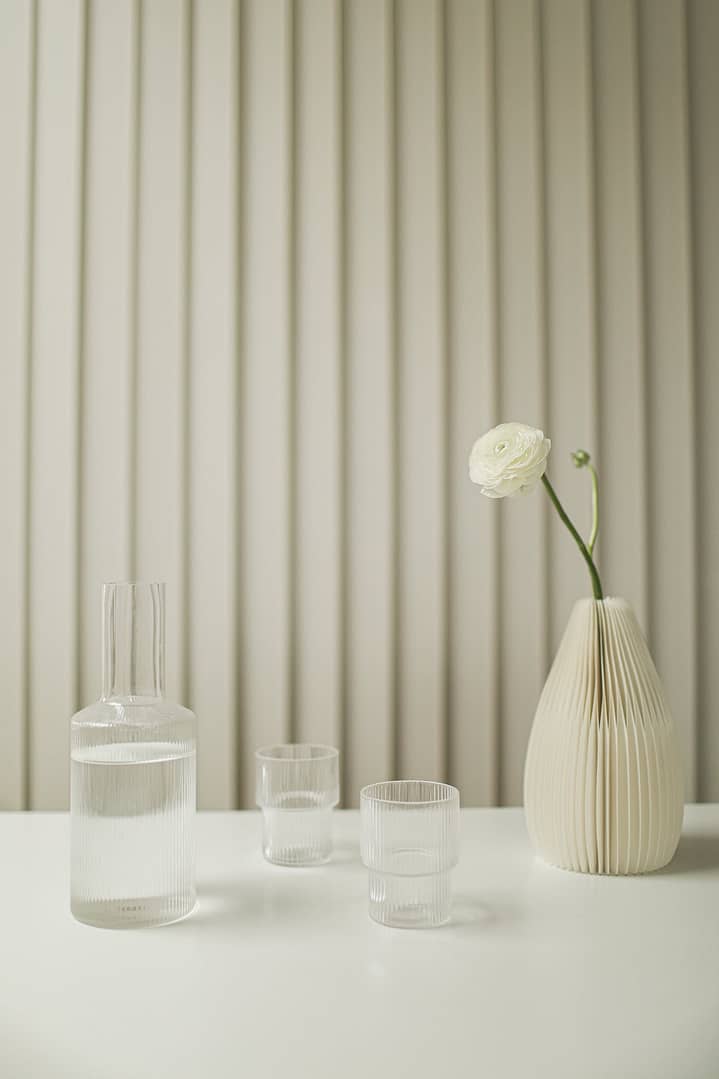Crafting Your Dream Eat-In Kitchen Design? Stick to Scandinavian Elegance

Do you think it’s possible a world where culinary inspiration meets sleek design, and functionality harmonizes with aesthetics?
Here is your personal guide to creating a kitchen that not only caters to your culinary desires but also serves as the heart of your home.
Whether you’re a seasoned chef, a food enthusiast, or simply someone who appreciates the beauty of a well-designed space, join us on this delightful journey. Our aim is to equip you with the tools and ideas that will enable you to craft your dream eat-in kitchen.
*Affiliate Disclaimer.
This post may contain affiliate links, which means we may receive a small commission, at no cost to you,
if you make a purchase through a link.
Craving For a Taste of Eat-in Kitchen History?
Now that we’ve set the stage for your culinary journey, let’s take a step back in time to explore the intriguing history of the eat-in kitchen. This unique space, which seamlessly blends cooking and dining, has a fascinating story to tell.
The concept of an eat-in kitchen, where cooking and dining coexist, can be traced back centuries. However, the modern eat-in kitchen, as we know it today, started to take shape in the late 19th and early 20th centuries. Back then, kitchens were primarily functional, separate spaces hidden from the rest of the home. Families typically dined in formal dining rooms. The concept of combining cooking and dining areas emerged as a response to changing societal norms.
As more and more families sought convenience and efficiency, kitchens began to evolve. The innovation of appliances like the gas stove and refrigerator in the early 20th century made cooking at home more accessible and enjoyable. Kitchens started to become hubs for social gatherings and family meals.
Fast forward to the 1960s, a time when significant changes were happening in the world of design and architecture.
The ’60s left an indelible mark on the eat-in kitchen, introducing bold colors, clean lines, and innovative materials.
Scandinavian design principles, with their emphasis on simplicity and functionality, gained popularity during this era.
The open-plan kitchen design, where the kitchen seamlessly integrates with the dining and living areas, became a symbol of modernity and a departure from the traditional closed-off kitchen spaces. This design revolution transformed kitchens into more inviting, sociable, and aesthetically pleasing environments.
The ’60s also marked the beginning of a fascination with wood, which remains a cornerstone of modern Scandinavian design. The warmth of wooden surfaces and the sleek, minimalist approach to design contributed to the enduring appeal of the eat-in kitchen.
As we look back at the ’60s design influence, we find inspiration that still resonates in modern Scandinavian eat-in kitchens.

Searching for Essential Components of Eat-in Kitchens?
With a sense of the history behind us, it’s time to look forward and explore the exciting world of modern Scandinavian eat-in kitchen trends.
What makes this design concept still very appealing today?
Minimalism Reigns Supreme: Modern Scandinavian design is renowned for its minimalist approach. Think clean lines, uncluttered spaces, and a focus on functionality. To target this trend, you’ll need sleek cabinetry, open shelving, and a restrained color palette dominated by whites, grays, and light wood tones.
Nature-Inspired Elements: In line with Scandinavian design principles, incorporating natural materials like wood, stone, and leather is a prevailing trend. Wood flooring, butcher block countertops, and woven dining chairs bring a touch of the outdoors inside, creating a warm and inviting atmosphere.
Open-Plan Living: The open-plan layout continues to be a dominant trend, as it fosters a sense of togetherness. It allows you to cook, dine, and socialize all in one space. By removing barriers, you create a fluid transition between the kitchen and the rest of your living area.
Bold Accents: While Scandinavian design often leans toward a neutral color palette, it’s not unusual to introduce bold accents. Consider adding a pop of color through decorative items, such as dishes, textiles, or a statement piece of artwork.
Must-Have Elements: Here a few suggestions from us.
- Quality Lighting: Adequate and well-placed lighting is crucial – even for a Scandinavian kitchen. Combine natural light with pendant lights or under-cabinet lighting to ensure your kitchen is well-illuminated.
- Functional Layout: Of course, make sure the kitchen layout is efficient, with work zones for preparation, cooking, and cleaning. The classic ‘kitchen work triangle’ of sink, stove, and refrigerator still holds value.
- Durable Countertops: Opt for durable and easy-to-maintain countertops. Choices like quartz, granite, or high-quality laminate offer both practicality and aesthetics.
- Ample Storage: Scandinavian kitchens are known for their clever storage solutions. Invest in cabinets with pull-out drawers and hidden storage to keep your kitchen clutter-free.
- Quality Appliances: While Scandinavian kitchens favor simplicity, quality appliances are a must. Look for energy-efficient options with modern features.
So, as you contemplate your kitchen renovation or creation, keep these elements in mind, and let your imagination run wild. Your kitchen is about to become the heart of your home, and these trends will help it beat to a beautiful, modern rhythm.

What Are the Top 5 Modern Scandinavian Eat-In Kitchen Design Ideas?
Let’s now talk about what makes the essence of this style and create spaces that are both functional and visually stunning.
1. The All-White Aesthetic
Embrace the quintessential Scandinavian look by choosing an all-white kitchen. White cabinetry, white walls, and white countertops create a clean and airy atmosphere. To avoid a clinical feel, introduce texture through subway tiles, open shelving, and hints of wood – wooden dining table or chairs, add warmth and contrast.
2. Nordic Minimalism
For those who appreciate the less-is-more approach, Nordic minimalism is the way to go. Incorporate sleek, handleless cabinets, neutral colors, and an uncluttered layout. The focus here is on simple, functional design that removes unnecessary distractions, leaving you with a kitchen that’s a model of efficiency.
3. Industrial Scandi Fusion
Blend the charm of Scandinavian design with industrial elements. Think exposed brick walls, metal accents, and concrete countertops. This fusion creates a modern and urban vibe that’s perfect for those who appreciate a slightly edgier aesthetic.
4. Hygge-Inspired Warmth
Hygge is the Danish concept of coziness and comfort, and it’s perfect for a Scandinavian eat-in kitchen. Incorporate soft textiles, like plush cushions on dining chairs, and warm lighting. The color palette should include earthy tones and natural materials to evoke a sense of coziness and relaxation.
5. Monochromatic Elegance
For a sleek and contemporary take on Scandinavian design, choose a monochromatic color scheme. This could be shades of gray, black, or even navy blue. Use these colors for cabinets, countertops, and walls. The result is a kitchen that exudes elegance and sophistication.
Each of these design ideas can be tailored to your personal preferences and the specific layout of your kitchen. Whether you favor the simplicity of Nordic minimalism or the warmth of a Hygge-inspired retreat, these options allow you to create a space that is uniquely yours.

Your Burning FAQs
How can I make my small kitchen feel spacious in a Scandinavian design?
Scandinavian design is renowned for its ability to make small spaces feel open and uncluttered. Start by using light colors to create an airy atmosphere. As we always suggest, opt for multi-functional furniture to maximize space. Incorporate open shelving to avoid visual bulk, and ensure you have ample lighting to keep the space well-lit.
How can I add color to a predominantly white Scandinavian kitchen?
If you desire some color in your white kitchen, opt for accessories and accents. Incorporate colorful dishes, kitchen utensils, or textiles like curtains and rugs. This not only adds a pop of color but also allows for easy changes if you decide to switch things up later.
Can I combine different Scandinavian design styles in one kitchen?
Yes, you can! Scandinavian design is incredibly versatile. You can mix elements from various styles, such as combining the simplicity of Nordic minimalism with the coziness of Hygge. It’s all about creating a space that reflects your personal taste and lifestyle.

Final thoughts?
With an array of design ideas that cater to various tastes and preferences, you’re now armed with the knowledge to transform your kitchen into the heart of your home.
Whether you’re drawn to the timeless charm of an all-white aesthetic, the sophistication of a monochromatic elegance, or the warmth of a Hygge-inspired retreat, your options are as diverse as your culinary creations.
Remember – a Scandinavian-inspired kitchen isn’t just about design; it’s about creating a space that nourishes both your body and your soul. It’s a place for laughter, shared meals, and cherished moments with loved ones.
Your kitchen can be a reflection of your personality and a canvas for your creativity – the sky is the limit when it comes to personalizing your dream kitchen.
Just keep in mind the power of simplicity, functionality, and warmth. Let your kitchen be a source of inspiration, where every meal is a work of art, and every moment is a cherished memory.
Your dream eat-in kitchen is within reach, and it’s more than just a space – it’s a place where you can savor the flavors of life. Bon appétit!
